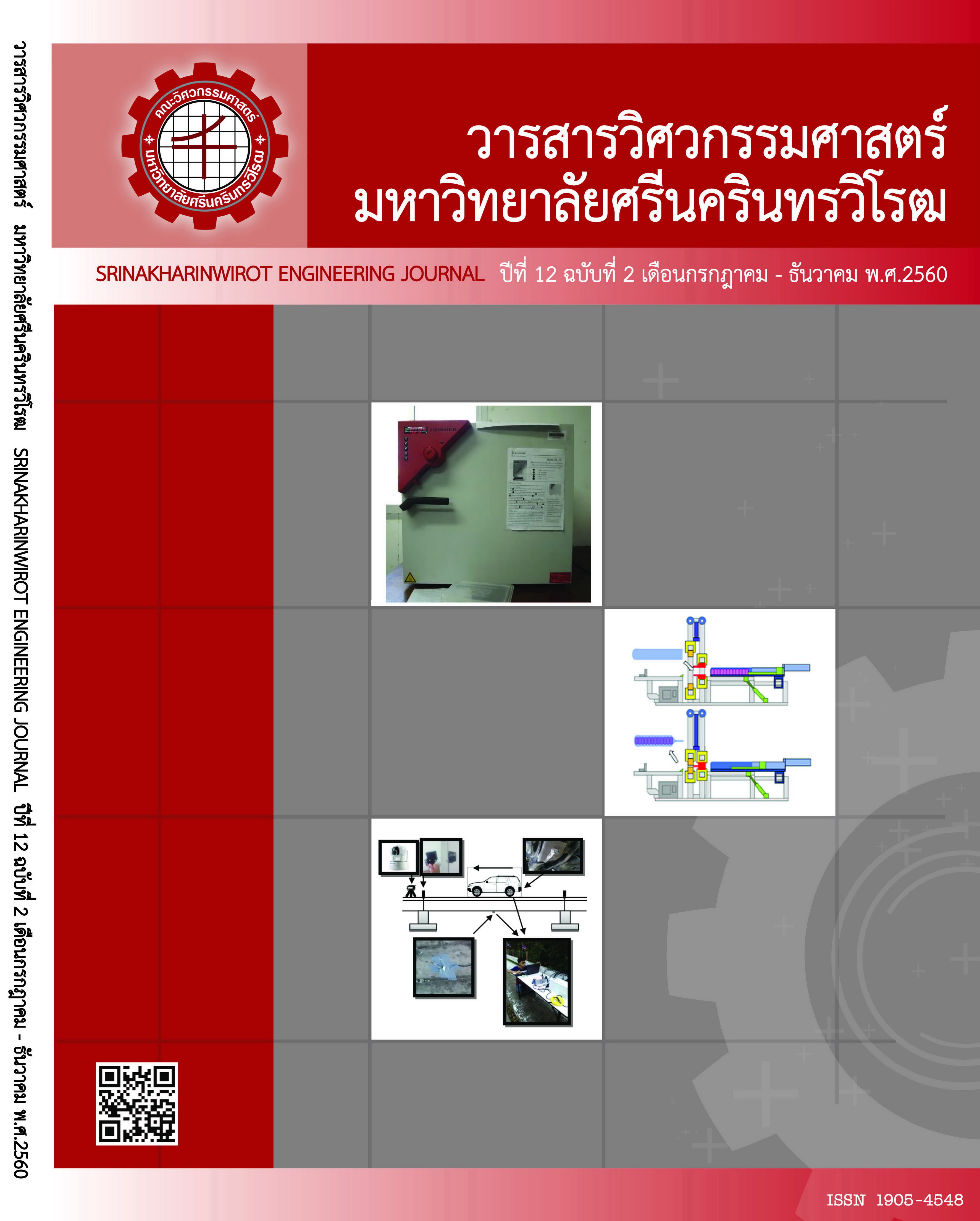An Application of Axiomatic Design and Constraints Relation Matrix in Engineering Design Process
Main Article Content
Abstract
Redesign often occurs during the process of the engineering design to meet specifications of customer requirements in term of functional requirements and usage limitations, since the requirements cannot be completely analyzed at the beginning and during the design process. To reduce this problem, this research proposes the application of using axiomatic design theory to analyze the function structure and physical design by applying the Constraint Relation Matrix (CRM), that was developed to consider the relationship between the design solution and design constraints at every step of the decision making for reducing the possible alternatives of design solution. The design constraints are classified into two types: operation constraints, which are considered in module level, and technique constraints, which are considered in sub module until part level. By understanding the relationship of constraints at every level, all constraints will be considered together with all component parts related during the design process for confirming, that all constraints will be considered and the designer will not face to the problem of the redesign.
Article Details
Copyright belongs to Srinakharinwirot University Engineering Journal
References
[2] G. Pahl, W. Beitz, J. Feldhusen, and K. H. Grote, “Engineering Design - A Systematic approach,” Springer-Verlag, London, 2nd Ed., 2007.
[3] N. Cross, “Engineering Design Methods: Strategies for Product Design,” John Wiley & Son, West Sussex, 4th Ed., 2008.
[4] ทศพร อัศวรังษี และณัฐวุฒิ จันทร์ทอง. “ระเบียบวิธีการเพื่อการออกแบบชุดอุปกรณ์เสริมสำหรับเครื่องจักรอัตโนมัติ: กรณีศึกษาโมดูลหยิบจับชิ้นงานของเครื่องซีเอ็นซีแมชชีนนิ่งเซ็นเตอร์” วารสารวิศวกรรมศาสตร์ มหาวิทยาลัยศรีนครินทรวิโรฒ. ปีที่ 11 (ฉบับที่ 2) : 1-13, 2016.
[5] V. Hubka. and W.E. Eder, “Theory of Technical Systems – A Total Concept Theory for Engineering Design,” Springer-Verlag, Berlin, 1988.
[6] J. S. Gero and U. Kannengiesser, “The Situated Function-Behaviour-Structure Framework,” Design Studies, vol. 25, pp. 373-391, 2004.
[7] J. S. Gero, “Design Prototypes – a Knowledge Representation Schema for Design,” AI Magazine, vol. 11(4), pp. 26-36, 1990.
[8] Y. Umeda, and T. Tomiyama, “FBS modeling: Modeling scheme of function for conceptual design,” Workshop on Qualitative Reasoning about Phys Systems, Amsterdam, pp. 271–278, 1995.
[9] N. P. Suh, “The Principles of Design,”, Oxford University Press, New York, 1990.
[10] N. P. Suh, “Complexity: Theory and Applications,” Oxford University Press, New York, 2005.
[11] G. J. Park, “Analytic Methods for Design Practice,” Springer-Verlag, Germany, 2007.
[12] N. P. Suh, “Axiomatic Design: Advances and Applications,” Oxford University Press, New York, 2001.
[13] H. Johannesson and A. Claesson, “Systematic product platform design: A combined function means and parametric modeling approach,” Journal of Engineering Design, vol. 16(1), pp. 25-43, 2005.
[14] D. Kannan, K. Govindan and S. Rajendran, “Fuzzy Axiomatic Design approach based green supplier selection: a case study from Singapore,” Journal of Cleaner Production, vol. 96, pp. 194-208, 2015.
[15] M. Yang, F. I. Khan, R. Sadiq and P. Amyotte, “A rough set-based quality function deployment (QFD) approach for environmental performance evaluation: a case of offshore oil and gas operations,” Journal of Cleaner Production, vol. 19, pp. 1513-1526, 2011.


